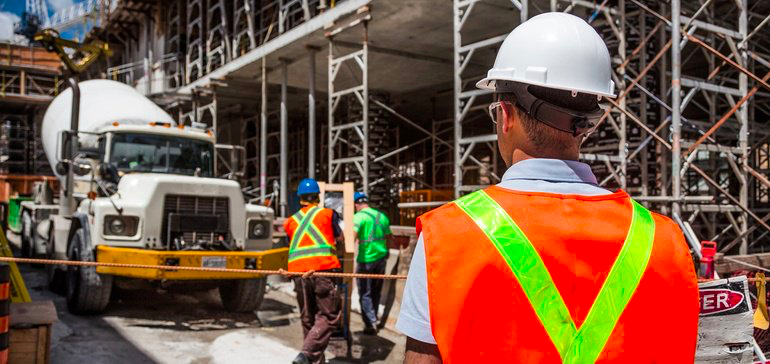Construction takeaways from OSHA's July 2019 updates
Author: Kim Slowey Published Date: May 20, 2019

In 1995, in response to a presidential memo, OSHA began its Standards Improvement Project with the goal of streamlining its own rules, increasing compliance and taking some of the financial and regulatory burden off employers. Since launching the SIP initiative, there have been three revisions to OSHA standards under the program — in 1998, 2005 and 2011 — with a new round of changes announced last week marking the fourth and final one.
OSHA made these rule change proposals in October 2016, and after a public comment period, decided not to move forward with four of the proposals: requiring employers to ensure that personal protective equipment fits each employee; allowing employers to use more modern decompression tables during underground construction; making the existence of loose rock or soil and excavated material or equipment next to a trench a hazard; and a revision to the language in the agency's lockout/tagout standard.
OSHA's most recent revisions, which the agency estimates will save employers $6 million a year, will not be applicable to every contractor, but all of them fall under the rules by which every contractor must abide. The changes go into effect on July 15. Below is a roundup of some of the most important changes for the commercial construction industry.
Reporting Job-Related Hearing Loss
In this section, OSHA is adding a cross-reference to another standard's analysis that will help physicians and other licensed health professional determine if a case of hearing loss is work-related. The change, OSHA said, simply reinforces the requirement that if an event or exposure caused or contributed to new hearing loss or aggravated preexisting hearing loss, the hearing loss must be considered work-related.
Chest X-Ray and X-Ray Storage Requirements
This revision will remove the requirement for periodic chest X-Rays when workers are exposed to inorganic arsenic, coke oven emissions and acrylonitrile. The agency's research, as well as industry input, has indicated that X-Rays in these instances do little to determine the presence of lung cancer. The revision will also allow for storage of digital X-Rays.
911 Emergency Services At Worksites
Contractors will still have to post telephone numbers for ambulances and other emergency responders at each worksite in areas where 911 emergency dispatch services are not available. But, given the proliferation of cell phones since the standard was last revised, they also will have to post location information at jobs in areas that do not have Enhanced 911, which automatically provides the caller's location to dispatchers.
This revision also requires employers to ensure that the system they will rely on to call for an ambulance is effective at the jobsite. For instance, if the call will be made via cell phone, the employer must make sure there is reliable service at the jobsite location.
Permissible Exposure Limits (PELs)
There are permissible exposure limits for a wide variety of substances designated outside of OSHA's Part 1926, which is the construction-specific standard. However, the agency is correcting and clarifying this section to eliminate confusion and better align the standard with PELs in other OSHA standards.
Process Safety Management of Highly Hazardous Chemicals
OSHA is streamlining Part 1926 by eliminating all 31 pages of text from this section and replacing it with a cross-reference to the exact same regulations in general industry standard 1910.119. The agency added that most of the standard is not applicable to contractors anyway, with the exception of paragraph (h).
Lanyard/lifeline Break Strength
OSHA is revising the minimum breaking-strength requirement for lifelines and lanyards to 5,000 pounds. This will reduce the strength requirement from the 5,400 pounds that currently is specified in some construction standards. However, the change will standardize the 5,000 pounds across construction and general industry standards, which will likely increase compliance.
Manual on Uniform Traffic Control Devices (MUTCD)
This change should end frustration for many contractors who currently must follow multiple sets of regulations for traffic signs and devices, flaggers and barricades, courtesy of federal, state and local governments. This standard will now require compliance with the USDOT and the 2009 Edition of the Manual on Uniform Traffic Control Devices.
Load Limit Postings
OSHA will take an unnecessary burden off of single-family, residential contractors with this change exempting them from having to post maximum safe-load limits for floors in homes that are under construction. The agency said that safe-load limits are rarely an issue in single-family construction.
MSHA Underground Construction — Diesel Engines
This change revises the language of this standard to ensure that mobile diesel-powered equipment used underground comply with the most recent Mine Safety Health Administration's provisions rather than the outdated ones currently specified in the standard.
Rollover Protective Structures: Overhead Protection
OSHA has removed the outdated test procedures and performance requirements for construction equipment rollover protective structures (ROPS) and overhead protection and replaced it with references to the relevant consensus standards, like those published by the International Organization for Standardization (ISO).
Regulation of Coke Oven Emissions in Construction
Rather than a revision, OSHA is deleting this section. According to the agency, any work during operation of coke ovens falls under general industry standards, so it is removing this section from Part 1926 altogether.
Collection of Social Security Numbers
In order to protect the privacy of employees and to help prevent identity fraud, OSHA has removed the requirement that employee Social Security numbers be included on exposure monitoring, medical surveillance and other records. All in all, the agency is removing the Social Security number requirement from 19 standards, including those related to asbestos, lead, bloodborne pathogens and respirable crystalline silica.
